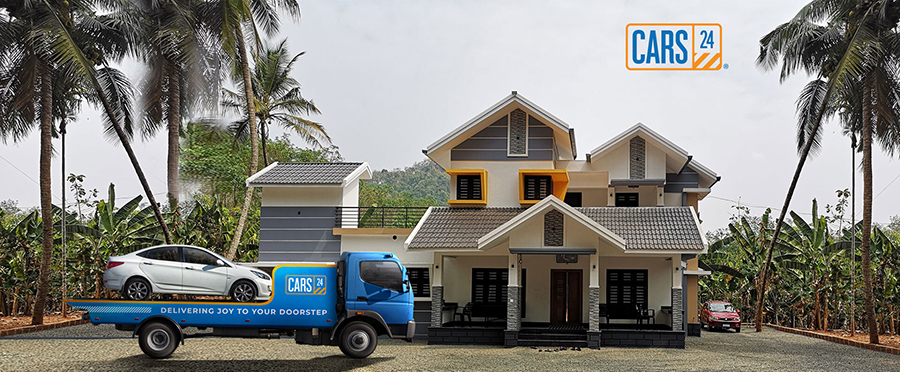In top gear with OOH as a tactical weapon
By Pray Jani - July 21, 2021
OOH offers marketers a tactical weapon – the weapon of being hyperlocal, says Gajendra Jangid, Co-Founder and CMO, CARS24

 What makes OOH a favourable medium of communication for a venture like CARS24?
What makes OOH a favourable medium of communication for a venture like CARS24?
The Indian car market is still at a nascent stage and under-penetrated in comparison to its counterparts in developed markets. In India, car ownership stands at a meagre 3%, creating a huge opportunity for the auto industry. Therefore, finding a car buyer or car seller, who may be in the market to sell or buy a pre-owned vehicle, is like finding a needle in a haystack. Given this, CARS24 deploys an always-on reach-first approach where mass media such as television is used to reach the population.
Also, car buying or selling is not an impulse purchase. On the seller side, the customer’s primary motivation is price, while for the buyer, the primary motivation is quality. Since television can help reach customers effectively and efficiently, reach must be complemented with additional media touch-points outside the home to remain on top of the customer’s mind.
CARS24 believes in tactical marketing as opposed to spray and pray. Hence, if certain markets are not moving in line with PAN-India trends, such markets are selected for tactical OOH campaigns to complement reach-building efforts.
Other than this, OOH offers marketers a tactical weapon – the weapon of being hyperlocal. In this sense, OOH allows CARS24 to target customers who are in the market and deeper into the funnel, for example, customers around new or used car dealerships.
OOH is also a favourable medium to supplement key brand launches. The availability of multi-fold inventory formats across key arterial routes, traffic junctions and areas with high footfalls showcases OOH’s significance. Moreover, numerous experiments – such as programmatic OOH buying – currently in a nascent phase, will only add more efficiency in the years to come.
As the New Normal begins to take shape, what are some of the key touchpoints that you will be targeting once the pandemic is over?
Currently, as per Google Mobility, consumer movement across retail and recreation areas, parks, public transport and workplaces is between -17% to -31% compared to pre-COVID times. Consumer movement, currently, is restricted to supermarkets and pharmacies and residential spaces, which are up by ~14%. In such a scenario, marketers must prioritise their expenditure by following the consumer, and by leveraging media that the consumer is most likely to engage with and thus, being present across key touch-points of interest.
In such a scenario, indoor media or on-demand media takes primary importance. However, as the situation is starting to normalise in some cities, advertising across OOH is starting to become prevalent again.
Once ‘the new normal’ begins to take shape, coupled with improved mobility figures at both a pan-India and city level, key OOH touch points for CARS24 would be areas concentrated around new and used car dealerships, public transport touchpoints and areas with high consumer footfalls.
Given the organisation’s focus is now on the buyer-side, areas concentrated with new and used car dealerships will help grab the attention of customers. Inventory around public transport touchpoints will help attract customers who may have the disposable income to purchase private forms of transport and are first time buyers. Targeting areas with high customer footfalls – such as malls, key arterial routes, and major traffic junctions – would help garner instant reach and recall by sheer volume.
To maximise returns from OOH, our team has designed heat maps to understand the source of leads. The team is also working cohesively with media agencies to plot maps and construct campaigns that focus on driving traffic from under-penetrated locations as opposed to over-indexing in locations coupled with a problem of plenty.
OOH has a vast variety of media formats across multiple segments. Each format plays a different role or targets a specific set of audience. How do you diversify the OOH media formats in your campaigns? What role do the various formats play in your communications?
In our experience, OOH supplements our ATL advertising efforts. Other than this, OOH also helps build brand recall and is used to encourage customers into using our services – especially those customers who are deeper into the funnel.
Formats are all the more important as this medium is best used to build impressions in accordance with visibility. However, formats are only as useful as what they supplement – is the format located in a major traffic junction? Is the format located at a key arterial route? Is the format visible across a 5km+ radius? This information helps determine placement as well as the ideal format to choose. Why choose a bridge panel which is maybe 40 feet x 5 feet when you could choose a unipole that is 20 feet x 10 feet? Consumers will zoom past the bridge panel in seconds (without traffic of course) but could see the unipole given its location and placement.
Media buying and campaign planning undergo a rigorous vetting process. What parameters do you consider when planning an OOH campaign?
Like I said, at CARS24, given the fact that auto penetration in India is ~3%, we adopt a reach-first strategy built upon television, OTT and digital media. Post implementation, we closely monitor how our funnel moves across all our key territories. Here, in case of anomalies, we activate hyper-local media in markets where a clear push is needed.
Other than this, in the event of new campaign or business vertical launches, we view OOH as a go-to medium to supplement ATL efforts (push awareness, raise recall and reach segments that may not have been exposed to our communications).
In such scenarios, our first point of analysis is analysing road traffic movement and the lockdown regulations, in the context of COVID-19. Also, as mentioned earlier, our teams rigorously work on heat maps to determine which areas of a city our teams receive leads from. This gives us an outline to drive leads by utilizing hyper-local media from areas where lead counts are sparse. Then we plot available OOH inventory on such maps, as well as our fulfilment centres and determine the creative CTA. Inventory is viewed in terms of visibility, location and customer movement.
Upon evaluating these criteria, our OOH media plan comes into being and this is analysed in terms of either:
Pre vs post customer awareness / recall lift via SOA studies;
Pre vs post increments in website traffic / leads as a result of executing a campaign and
Comparing the marketing, where OOH was activated to a similar market in terms of uptick (control vs exposed setup)
Have you employed DOOH medium in your outdoor campaigns? What is your perspective towards digital outdoor media?
We have explored DOOH in the past. Currently, DOOH inventory is limited to malls, private outdoor locations such as business parks and transit points such as airports. DOOH inventory does exist outside these 3 key touchpoints, but is scarce. Therefore, in terms of activating OOH, DOOH does not feature as widely as it should. The industry should look to bolster the proportion of DOOH inventory as this will lead to more transparency – impressions, views garnered, the ability to display AV formats facilitating storytelling and the ability to use multiple creatives across carefully planned time-bands. Similarly, the combination of DOOH with some form of programmatic methodology can also further enhance the efficiency of OOH campaigns altogether.
In your opinion, and from your past experiences, do you see OOH as a medium that is inclusive of the start-up culture? In other words, if executed well, do you think that an OOH campaign by a start-up can reap similar benefits as does an OOH campaign for a well-established brand?
Yes. Brands – conglomerates and internet start-ups alike – all share similar motivations. These motivations ultimately boil down to (1) How best does OOH help supplement reach-based ATL efforts? (2) How does OOH build incremental reach? (3) How does OOH build brand recall? The answers to these questions may vary numerically, in terms of ROI, for different sectors. FMCG, for example, may validate efficacy via sales lift reports with a 3-month lag factor. On the other hand, internet companies or start-ups can almost see instant results. Nevertheless, the fundamentals will remain the same.
What kind of changes or advances do you anticipate from the Indian OOH industry? What are your expectations from them?
Increased DOOH share as a proportion of total available OOH inventory and how DOOH can pave the way for programmatic OOH in India will be key. Additionally, clear calculations on the part of media owners and other entities in terms of the potential reach of OOH sites in particular, based on potential eyeballs on a weekly, bi-weekly or monthly basis will only add transparency. This will help brands truly understand incremental reach being added.
Similarly, pricing transparency is also needed. Today, many variations exist between similar inventory (e.g. similar transit units) across markets and within the same market – rather than demand / supply / rental based pricing, an alternate pricing construct based upon reach (similar to the CPRP construct followed on television) will only add more value.

Stay on top of OOH media trends









